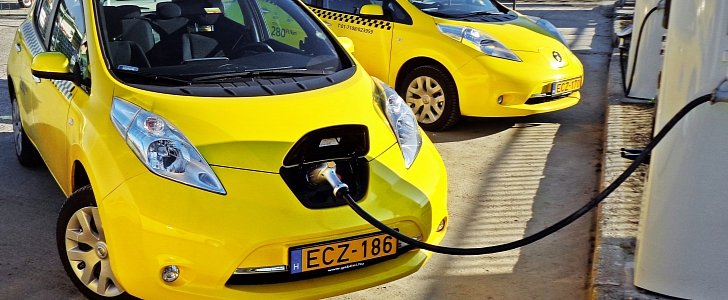The industry has long been bemoaning batteries as the one thing holding back a more spectacular evolution of the electric vehicles. The Li-ion solution that's widely used at the moment makes steady but very slow progress, and that's not to the taste of carmakers and buyers alike.
Not only are Li-ion battery packs heavy and large, but they also take forever to recharge - at least when compared to the time it takes an internal combustion engined car to get going again once it has depleted its fuel. Solve these two problems - the energy density and the charge/discharge speed - and there's absolutely nothing that'll be able to stand in the way of electric vehicles. Provided the solution doesn't cost an arm and a leg, of course.
That solution might already be among us, but it simply needs some more tinkering with. In fact, it's already present in EVs and other electronic equipment: we're talking about supercapacitors. Also called electrochemical double layer capacitors (EDLCs), they provide short but powerful bursts of energy thanks to their much higher power density compared to batteries. In layman's terms, that means that supercapacitors can both deliver and absorb energy much faster. That would make them the ideal energy storage solution for electric vehicles, but there's a catch: despite extensive research in the field, EDLCs still have a much lower energy density than regular batteries, which means they can only hold smaller charges.
To put it in numbers, a regular no-frills supercapacitor can hold around 8-10 Watt-hours per kilogram, while lab prototypes made from graphene can go as high as 130 Wh/kg. However, that's still pretty far behind the average Li-ion battery with its 200 Wh/kg, and that's without accounting for the manufacturing costs.
But the simple fact that supercapacitors are being considered as a means of storing energy was unthinkable a few years ago, which only comes to highlight the progress made in the field. Should they ever reach that point where replacing the batteries in an EV could become reality, the charging time would be cut dramatically from a matter of hours, to just a few minutes. The maximum range could even lose its relevance as long as there are plenty of charging stations around where a five-minute stop could take care of another 200 miles of driving.
But we're not there yet. Spectrum IEEE quotes Jamil Kawa, a scientist at Synopsys: “Historically the ability of capacitors to act as a ‘store of energy’ was so minuscule compared to batteries that they were never seriously considered as an alternative. Supercapacitors and ultracapacitors have dramatically increased the volumetric capacity for energy storage. It is not yet on par with batteries or fuel cells, but is close enough to be competitive with them given that it has some qualities that are superior to batteries.”
That solution might already be among us, but it simply needs some more tinkering with. In fact, it's already present in EVs and other electronic equipment: we're talking about supercapacitors. Also called electrochemical double layer capacitors (EDLCs), they provide short but powerful bursts of energy thanks to their much higher power density compared to batteries. In layman's terms, that means that supercapacitors can both deliver and absorb energy much faster. That would make them the ideal energy storage solution for electric vehicles, but there's a catch: despite extensive research in the field, EDLCs still have a much lower energy density than regular batteries, which means they can only hold smaller charges.
To put it in numbers, a regular no-frills supercapacitor can hold around 8-10 Watt-hours per kilogram, while lab prototypes made from graphene can go as high as 130 Wh/kg. However, that's still pretty far behind the average Li-ion battery with its 200 Wh/kg, and that's without accounting for the manufacturing costs.
But the simple fact that supercapacitors are being considered as a means of storing energy was unthinkable a few years ago, which only comes to highlight the progress made in the field. Should they ever reach that point where replacing the batteries in an EV could become reality, the charging time would be cut dramatically from a matter of hours, to just a few minutes. The maximum range could even lose its relevance as long as there are plenty of charging stations around where a five-minute stop could take care of another 200 miles of driving.
But we're not there yet. Spectrum IEEE quotes Jamil Kawa, a scientist at Synopsys: “Historically the ability of capacitors to act as a ‘store of energy’ was so minuscule compared to batteries that they were never seriously considered as an alternative. Supercapacitors and ultracapacitors have dramatically increased the volumetric capacity for energy storage. It is not yet on par with batteries or fuel cells, but is close enough to be competitive with them given that it has some qualities that are superior to batteries.”

